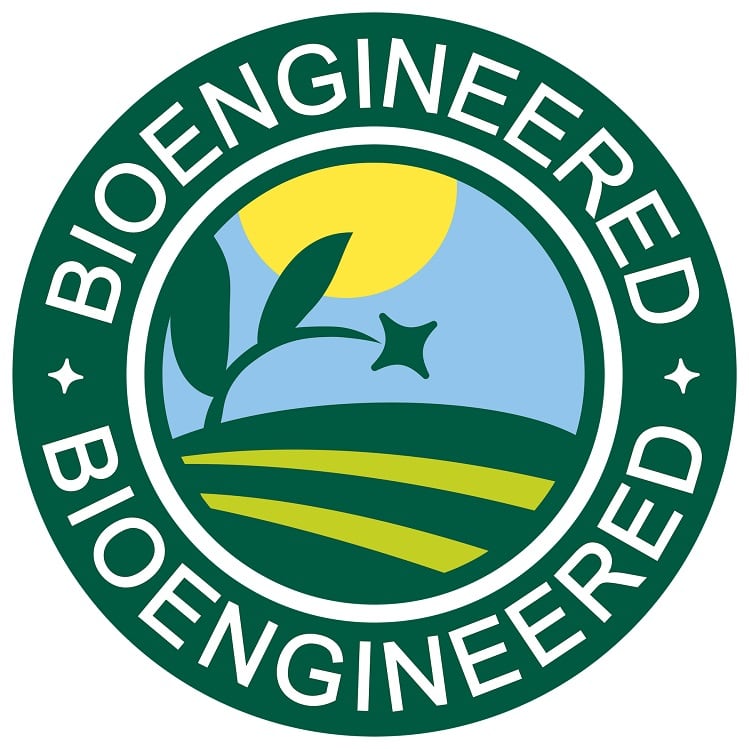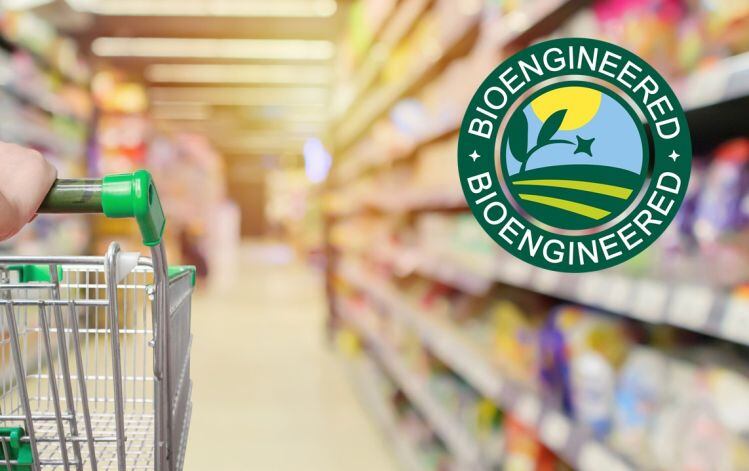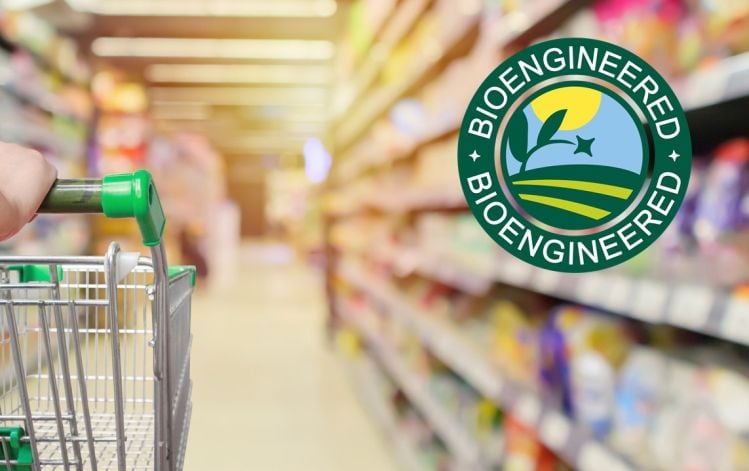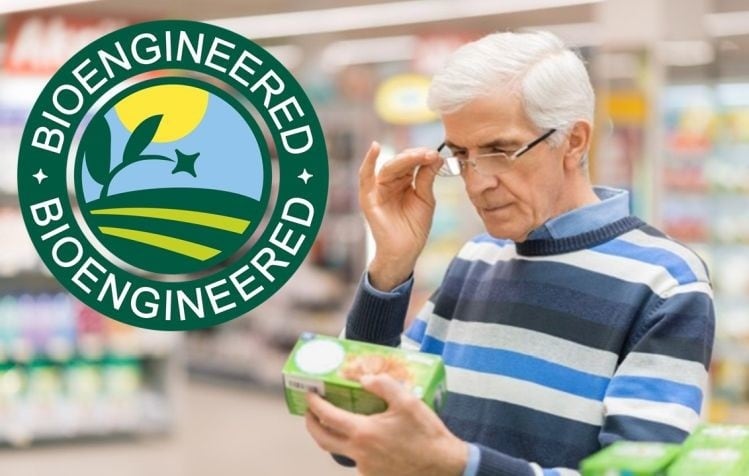The law - which is being challenged in court by some groups who believe it doesn’t go far enough - defines bioengineered foods fairly narrowly as those that “contain detectable genetic material that has been modified through certain lab [in vitro rDNA] techniques and cannot be created through conventional breeding or found in nature.”
In practice, this means that many highly-refined ingredients (starches, oils, sweeteners, emulsifiers) from widely bioengineered crops such as corn and soy will likely not require labeling, because the modified material is not detectable through testing.
However, the onus is on packaged food manufacturers to go through USDA's published list of bioengineered foods, identify any ingredients they use that may be derived from these crops, and then contact suppliers to determine whether they need to be labeled.
Foodchain ID: ‘We were expecting suppliers to be improving their responsiveness and support of their customers’ BE compliance efforts and we haven’t really seen a change at all’
And this close to the deadline, many suppliers are still not up to speed with the legislation, said Nate Ensrud, general manager, technical services, at FoodChain ID, which notes that the 13 foods dubbed by USDA to be at high risk to be bioengineered “can be translated into thousands of ingredients and products sourced from numerous global suppliers.”
Ensrud told FoodNavigator-USA: “We were expecting suppliers to be improving their responsiveness and support of their customers’ BE [bioengineered] compliance efforts and we haven’t really seen a change at all. There is still a lot of unresponsiveness or vague statements.
“Companies think that they have documentation that gives them clear insight into the BE risk of their ingredients, but a lot of what we’ve reviewed doesn’t meet the standards we would expect to support compliance.
"So, we have clients asking suppliers the question about BE in a number of different ways and what they are getting back are these really generic statements like, ‘We've done an assessment and this isn't BE,' and we follow up and say, 'OK, but what's behind that statement?' And I’d say the vast majority of the time, we get just about nothing.
“Are there test results behind it? No. Do you know the source of the inputs to the ingredient? No. There's a pretty large swath of the industry that hasn't really done anything about this."
'A lot of companies are standing on the sidelines waiting to see what enforcement might look like'
But how is this possible given the deadline for compliance is just around the corner?
“There's just so much inertia to overcome," said Ensrud.
"Most companies are running pretty lean, it’s been a really hard couple of years, and it's not like they have people sitting around waiting to go bother suppliers and it's not like the suppliers have this documentation to hand.”
It’s also possible that "a lot of companies are standing on the sidelines waiting to see what enforcement might look like,” he speculated, while others are simply not aware that the law even applies to them, especially in categories such as dietary supplements.
“Now that we’ve seen a group of advocates suing the government because the law doesn’t have the teeth they want, there’s a possibility that advocacy groups will be placing their focus on products that aren’t properly disclosing, too.”
'The supply chain is a mess and I can no longer guarantee that the cornstarch that I’m using doesn’t contain BE material...'
Meanwhile, CPG firms’ compliance problems have been compounded by recent supply chain disruptions, said Melissa Grzybowski, president at Food Consulting Company, which recently held a Q&A session with an USDA official for CPG companies about the NBFDS.
Quoting one industry contact, who observed, “The supply chain is a mess and I can no longer guarantee that the cornstarch that I’m using doesn’t contain BE material,” Grzybowski said she expected firms may have to ‘over-declare’ in the first instance if they can’t get the documentation they need, as blanket ‘may contain’ statements are not permitted under the regulation.
“I think some companies are not ready and a reason is because of supply chain issues that they are experiencing. They may have felt comfortable with ingredient sources that didn't require the disclosure and packaging wasn't revised to include it, and now they're finding they need to move to different suppliers who may not have the documentation they need.”
But there is also lingering confusion regarding suppliers whose products do not require the disclosure, she added. “An example would be a USDA regulated meat product. Some FSIS-regulated suppliers of these ingredients may be unaware that while their products are not subject to the law, when used as an ingredient in another finished product, BE disclosure may be required.
“These FSIS-regulated companies are not exempt from the law and do need to provide customers with BE information to assist with the disclosure assessment.”
USDA has also stressed that Non-GMO project verified status or compliance with EU non-GMO “does not necessarily mean that you are not required to include the Disclosure,” she added.
Prime Label Consultants: Expect to see some over-declaration in the short term
Jesse Zuehlke, PhD, general manager at Prime Label Consultants, added: “Everyone is still contending with the original timeline of the rule and a lack of clarity around application of some of the provisions.
"However, being right up against the deadline, one consideration for manufacturers is the provision that over-declaration is usually a compliant approach with this rule - so if a manufacturer knows an ingredient comes from a food on the list by AMS [USDA's agricultural marketing service], it may be labeled as bioengineered.
“In practice there are definitely complications with this approach, but it falls within the regulation and seems to be gaining some traction given the timeline.”
Consumer Brands Association: Supply chain disruptions are compounding compliance challenges
Meanwhile, the disruption being experienced right across the supply chain right now is only adding to the challenges facing firms trying to get their ducks in a row ahead of the deadline, added Betsy Booren, SVP regulatory affairs at trade association The Consumer Brands Association.
"The vast majority of them [CBA members] will be as close as they can be to be in 100% compliance [by the Jan 1, 2022 deadline]," she said. "But what we’ve shared with the administration, the White House, all the way down to the secretary [of agriculture] and his staff, is that the supply chain is causing unusual stress to the system, and depending on the day, depending on the issue, we may have a problem.”
It may be, for example, that you’ve got the information you need from suppliers, but you can’t get your labels printed in time, she said, as supply chain disruption is also impacting packaging materials. “And it’s a common misconception to say digital will make it easier [for example using QR codes that direct shoppers to a website with the requisite information] because you still need to print that QR code.”
What will enforcement look like?
As for enforcement, the key to compliance is the maintenance of records, with manufacturers required to maintain records for at least two years beyond the date the food is sold or distributed for retail sale.
USDA’s enforcement authority over failure to disclose bioengineered foods is quite limited, so it can’t recall or seize products, or issue fines, but it can conduct investigations if, as is most likely, competitors or consumer groups make complaints, and make public the summary of the results of audits and investigations.
‘Enforcement will only be complaint driven, no in-store retail reviews or supplier trace-back audits’
Grzybowski, paraphrasing the USDA official, added that the industry should “expect both enforcement activity and educational outreach. USDA is ready to enforce on Jan 1 but it depends on how many complaints they get. They are staffed with two branches (compliance/enforcement and research/rulemaking/outreach) and staff capacity to do both enforcement and educational outreach at the same time.
“Enforcement will only be complaint driven, no in-store retail reviews or supplier trace-back audits until they receive a complaint from someone. An internal vetting process will take place to determine if the complaint has merit, then would move to requesting documents from the manufacturer.”
While the NBFDS lacks a private right of action, so individual consumers can’t sue over a violation of the NBFDS, it doesn’t stop states from adopting identical requirements that impose remedies for violations such as injunctive relief or monetary damages, although no states have so far chosen to do this.
Record-keeping
As for USDA's published list of bioengineered foods, firms must identify any ingredients they use that may be derived from these crops, and then contact suppliers to determine whether they need to be labeled.
But this core list is just the starting point for manufacturers, as manufacturers’ record-keeping requirements may also apply to bioengineered foods not specifically mentioned on the main USDA list such as genetically engineered microbes now used to produce everything from vitamins and flavors to collagen, probiotics and whey protein.
While in most cases, the final ingredients may not contain any trace of the engineered microbes (yeast, bacteria, fungi etc) used to produce them, firms should consider maintaining records to show why a disclosure is not required if they have “actual knowledge” that the microbes were bioengineered or that, say, GM corn was used as a feedstock for a microbe, say attorneys.
The USDA's bioengineered foods list includes: Alfalfa, Arctic apples, canola, corn, cotton, BARI Bt Begun eggplant varieties, ringspot virus-resistant varieties of papaya, pink fleshed pineapple varieties, potato, AquAdvantage salmon, soybeans, summer squash, and sugar beet.
However, "even if a food is not included on the list, regulated entities whose records show that a food they are selling is bioengineered must make appropriate disclosure of that food," notes the USDA, which will review the list annually and, if necessary, make updates through the federal rulemaking process.
Validation that no modified detectable material is present
The NBFDS identifies three ways firms can determine that modified genetic material is not detectable:
1 - By using records to verify a food is sourced from a non-bioengineered crop (such records may include organic certification; country of origin records that show the food is imported from a country that does not produce bioengineered crops; or affidavits from suppliers stating the food is sourced from non-bioengineered crops).
2 - By using records to verify a food has been subjected to a refinement process that has been validated to render modified genetic material undetectable.
3 - By maintaining certificates of analysis (CoA) or other testing records that confirm the absence of detectable modified genetic material (eg. CoAs showing that each batch or lot of a food or ingredient was tested and does not contain detectable modified genetic material). Given that testing is getting more sophisticated, there is the possibility that modified material that is undetectable using current testing techniques may be detectible in future using more sophisticated tests, presenting challenges, say attorneys.
Once a refining process has been validated to render modified genetical material in a food undetectable, additional testing is not necessary to confirm the absence of detectable modified genetic material.
However, USDA will not be maintaining a list of validated refining processes, given the proprietary nature of food production, so it’s up to food manufacturers to work with suppliers to determine whether the processes they use make modified genetic material undetectable.
Blanket ‘may contains’ statements are not permitted under the NBFDS
So what do you do if you are using refined ingredients derived from bioengineered crops or microbes but you’re struggling to secure all the relevant documentation to determine if a disclosure is required?
Blanket ‘may contains’ statements are not permitted under the NBFDS. However, you can make a straight bioengineered food disclosure on your products (Bioengineered food' or 'Contains a bioengineered food ingredient') if you can’t get your ducks in a row before January 2022, even if you’re not 100% sure they meet the definition.
Voluntary disclosures – which feature slightly different wording such as ‘corn derived from a bioengineered source’ can’t just be slapped onto every product in lieu of proper record-keeping, meanwhile, as these are only permitted if you have actually done the testing to show modified material is not detectable, but still want to make a disclosure in the interests of transparency.

There are four disclosure options:
On-pack text: 'Bioengineered food' or 'Contains a bioengineered food ingredient'
USDA approved symbol (pictured right)
Electronic or digital link: 'Scan here for more food information' or 'Call xxxx for more food information'
Text message disclosure: 'Text [command word] to [number] for bioengineered food information.'
Voluntary disclosures: Foods that do not meet the definition of bioengineered but are derived from bioengineered food may be disclosed voluntarily using a 'derived from bioengineering' symbol or a phrase such as 'corn derived from a bioengineered source.'
The two most popular choices are a straight written ‘Bioengineered food/Contains a bioengineered food ingredient' disclosure, or the ‘Scan here for more food information' / 'Call xxxx for more food information' option, which many firms like because it doesn’t actually contain the word ‘bioengineered.’
A digital disclosure also has the advantage that if you're not sure yet if your ingredients count as ‘bioengineered’ under the law, firms can update your packaging right now, and then update the landing page you send people to in a few months’ time.
A lot of large companies are sending people to SmartLabel pages, while smaller ones are creating webpages.




